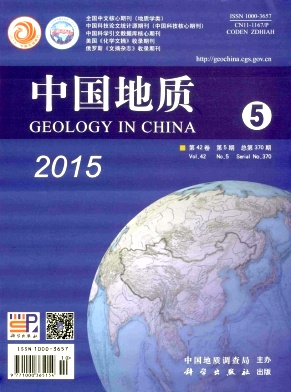JIAN Kun-kun1,WEI Yan-xia2,SHI Bin3,LIU li4, WANG Xing1, YUAN Zhang1. Petrogenesis and geological significance of the Early Mesozoic mafic dyke swarms in Zhongzaohuo area, East Kunlun orogenic belt[J]. Geology in China, 2015, 42(5): 1457-1470.
| Citation: |
JIAN Kun-kun1,WEI Yan-xia2,SHI Bin3,LIU li4, WANG Xing1, YUAN Zhang1. Petrogenesis and geological significance of the Early Mesozoic mafic dyke swarms in Zhongzaohuo area, East Kunlun orogenic belt[J]. Geology in China, 2015, 42(5): 1457-1470.
|
Petrogenesis and geological significance of the Early Mesozoic mafic dyke swarms in Zhongzaohuo area, East Kunlun orogenic belt
-
1. Shaanxi Center of Geological Survey,Xi’an 710016, Shaanxi, China; 2. No. 3 Co., Ltd.,Sinohydro Bureau, Xi’an 710016, Shaanxi, China; 3. Institute of Geology, Chinese Academy of Geological Sciences,Beijing 100037, China; 4. Hubei Geological Survey,Wuhan 430034, Hubei, China
-
Abstract
Abstract: The Zhongzaohuo mafic dyke swarms in East Kunlun are principally composed of dioritic porphyrite with minor lamprophyre, porphyritic diabase, and diabase. The LA-ICP-MS zircon U-Pb dating indicates that the mafic dykes were emplaced at (249±1) Ma. The mafic dykes are enriched in LILE and depleted in HFSE. The rocks have higher total REE,with slightly enriched LREE (∑REE=99.9×10-6~173.9×10-6 ,(La/Yb)N=3.5~9.3). Source region analysis shows that mafic magma resulted from the fluid from subducted ocean crust and the mantle metasomatism, and partial melting played a dominant role in magma evolution,while crustal contamination and fractional crystallization played a limited role in magmatic differentiation. Tectonic setting analysis shows that the formation of the rocks was related to subduction; in combination with the tectonic evolution of East Kunlun, the authors hold that the formation process of mafic dyke swarms in this paper is as follows: in early Triassic, as the result of northward subduction of Paleo-Tethys Ocean, fluids from the subduction slab were dehydrated and mantle peridotite experienced metasomatism, which promoted the mantle peridotite partial melting into mafic magma; the magma was affected by the dynamic background of the back-arc extension, and then it migrated upward to the upper crust along the fissures to form the mafic dykes.
-

-
-
Access History







 DownLoad:
DownLoad: